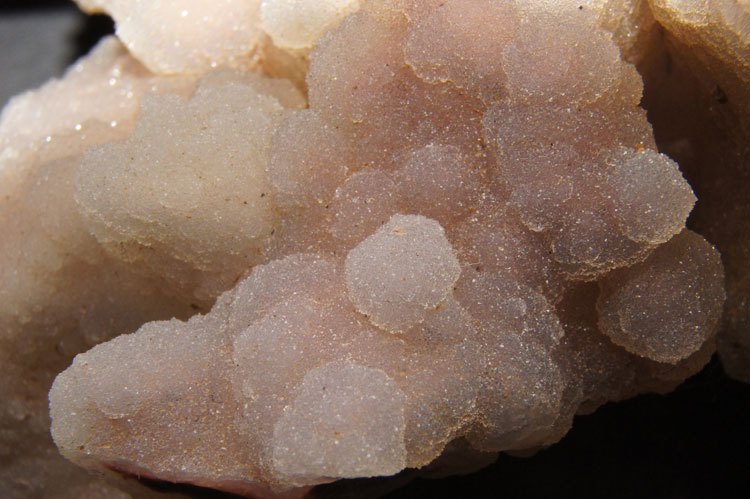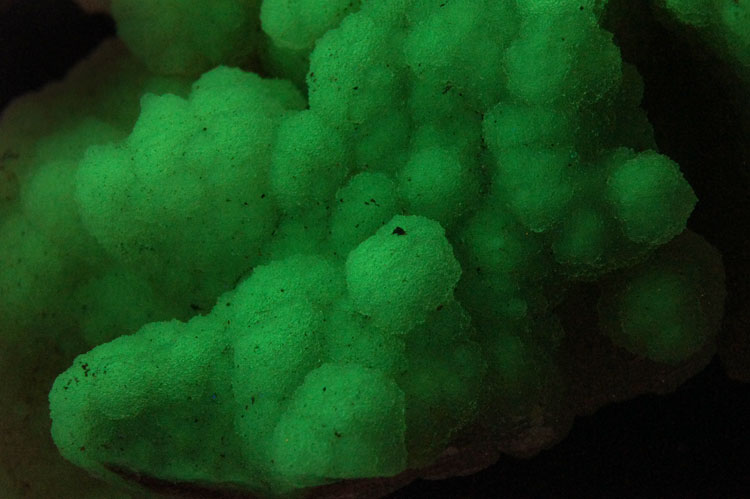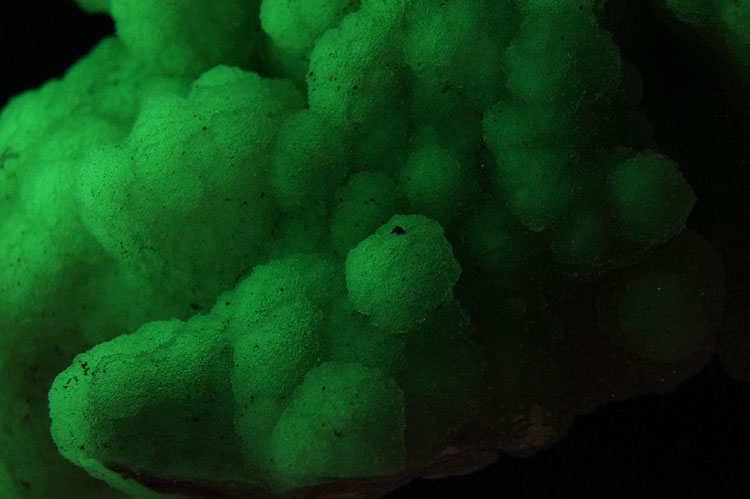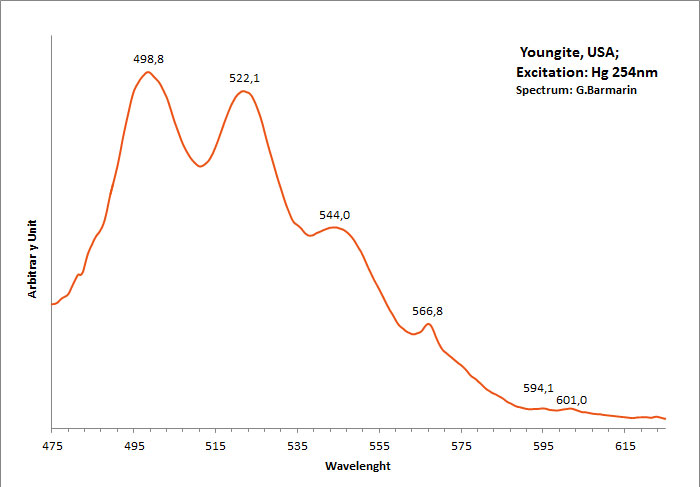Database of luminescent minerals
youngite
Chemical formula: See calcedoine
Family: Oxides and hydroxides
Status: NON APPR
Crystal system : Polycrystalline
Display mineral: OUI
Luminescence:
Shortwave UV (254nm) colors: |
Green , | ||
Intensity SW:Medium | |||
Daylight picture

youngite,
Pictures on Flickr:
http://www.flickr.com/groups/fluorescent-minerals/pool/55922094@N00/
Used with permission of the author
Shortwave (254nm) picture

youngite under UVSW,
Pictures on Flickr:
http://www.flickr.com/groups/fluorescent-minerals/pool/55922094@N00/
Used with permission of the author
Pictures Galery:



 ...
...Do you have a photo of this mineral you would like to see in the gallery? Contact us!
Phosphorescence (in the common sense of the term) observable with the naked eye:
No data
Comments:
Youngite is a local name applied to brecciated chalcedony-jasper rocks covered by druzy quartz crystals. It is found in natural caves and veins in Mississippian limestone near Glendo and Guernsey reservoirs in Platte County, Wyoming, USA. Youngite consists of red, yellow, chocolate, lilac, peach, gold, cream, orange, and purple jasper fragments within a matrix of off-white to grayish-blue chalcedony.
Activator(s) and spectrum:
Activator(s): (UO2)2+ (ion Uranyle) en impureté,
Peaks in the spectrum (nm):
UO22+ : 499nm, 522nm, 544nm 567, 594, 601nm (?)

Col. G. Barmarin; Spectre: G. Barmarin
Best localities for fluorescence (*):
- Mississippian limestone near Glendo and Guernsey reservoirs in Hartville District, Platte Co., Wyoming, USA;
(*)The data are not exhaustive and are limited to a few remarkable localities for fluorescence
Bibliographic reference for luminescence:
- The Henkel Glossary of Fluorescent Minerals, Dr. Gerhard Henkel, Published by the FMS, 1989 ,
Mineralogical reference on the Internet:
 http://www.mindat.org/show.php?name=Youngite
http://www.mindat.org/show.php?name=Youngite
 http://webmineral.com/data/Youngite.shtml
http://webmineral.com/data/Youngite.shtml
Internet Search:
 Image search on 'Google Images'
Image search on 'Google Images'
 Search for documents in all languages on Google
Search for documents in all languages on Google
A request providing no result means only that no such reference exists in the database, but it does not mean that what you are looking for does not exist, just not to our knowledge. If you think you have found an error or omission, please let us know via the contact page being sure to cite the source of information.

